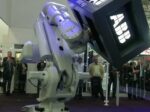Hillstone and Flowmon join forces to allow customers to build complete cybersecurity platforms
Hillstone Networks a leading provider of network security solutions, has announced a partnership with Flowmon Networks a vendor developing next generation monitoring and security solutions for network infrastructures. The joint offering between the two visionary companies will help customers build a complete cybersecurity platform. The joint network security solution, consisting of the Hillstone Networks Intelligent Next-Generation Firewall (iNGFW) and Flowmon Anomaly Detection System (ADS), can effectively intercept cyber threats from the Internet and internal networks, defend against modern network attacks, and comprehensively monitor and protect the overall network security posture. The Hillstone Networks iNGFW and Flowmon ADS work in conjunction to support the deployment of linked security policies across internal and external networks. The Hillstone iNGFW is used primarily for threat prevention for external networks, while the Flowmon ADS mainly detects internal network threats and passes details of the internal threat to the iNGFW, in order to complete the risk interception of threats and deliver a closed loop to the security administrator. “Cooperation with Hillstone is a perfect fit. Flowmon ADS eliminates risks that bypass traditional solutions. Its engine utilises sophisticated network behavior analysis, an advanced artificial intelligence based on machine learning. It permanently observes and analyses data communication seeking anomalies, revealing suspicious behavior and thus taking the entire security to the next level,” said Petr Springl, Director of Products and Alliances at Flowmon Networks. The Hillstone Networks iNGFW and Flowmon ADS joint solution can effectively intercept threats from the Internet and internal networks, defend against modern network attacks, comprehensively cover the overall network security posture, and make the internal network and external network stable, reliable, secure and credible. The solution brief is currently available on both Hillstone Networks and Flowmon Networks websites. Hillstone Networks’ Layered Threat Protection provides continuous threat defense at perimeters, internal networks and Cloud. Established in […]










